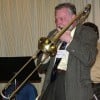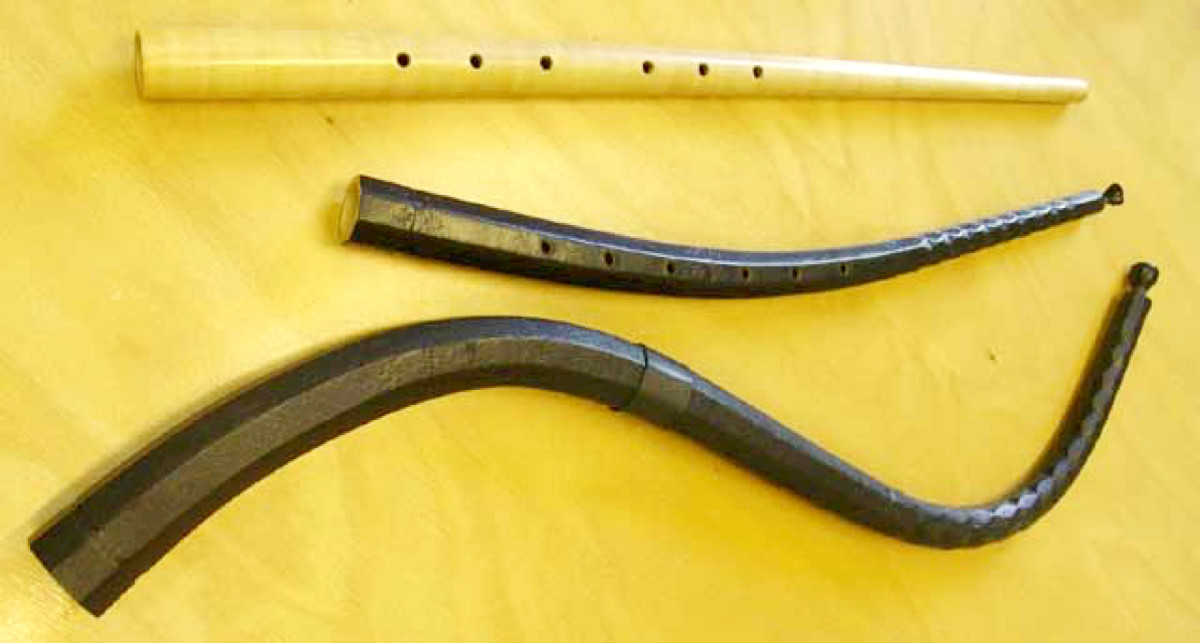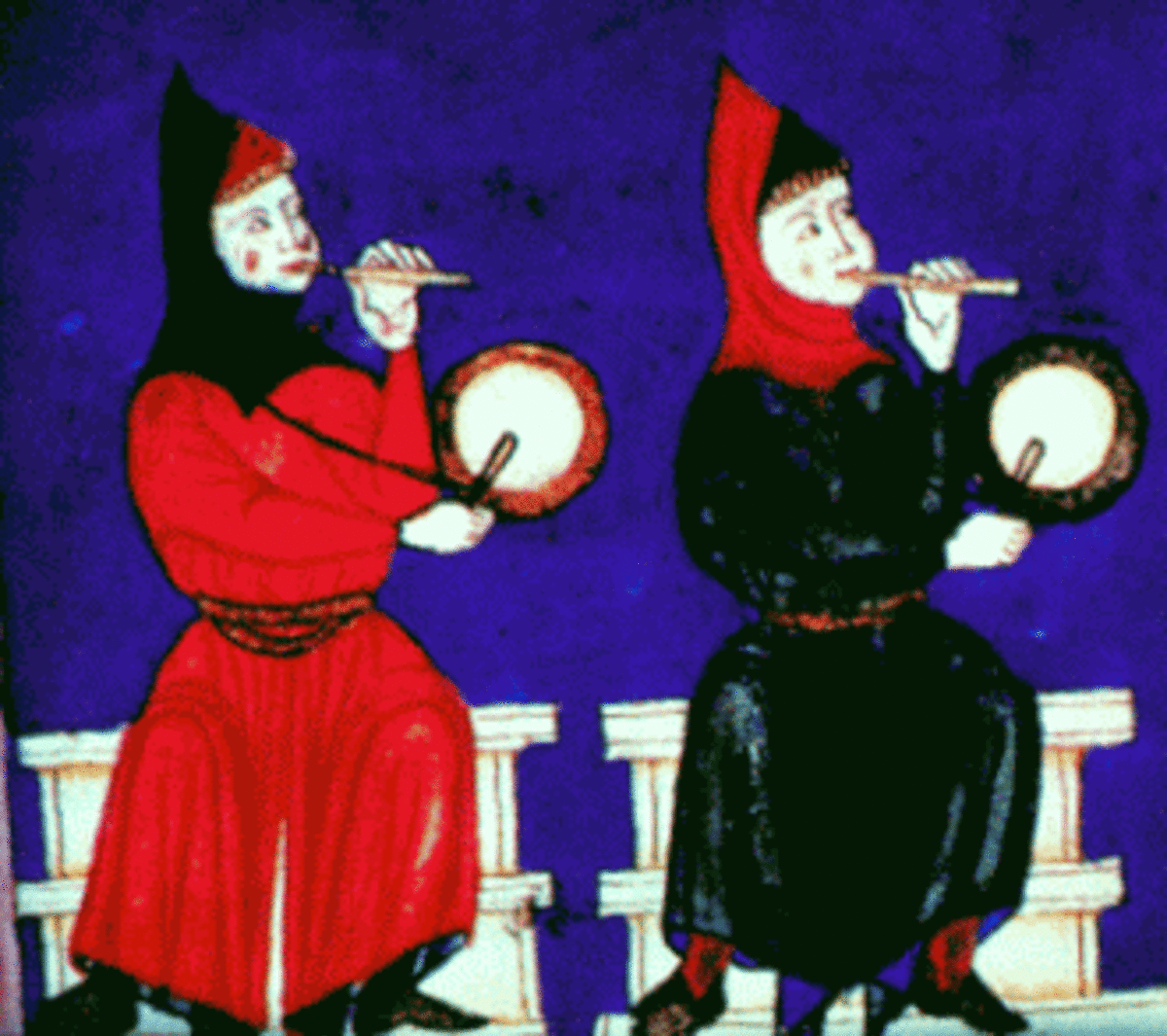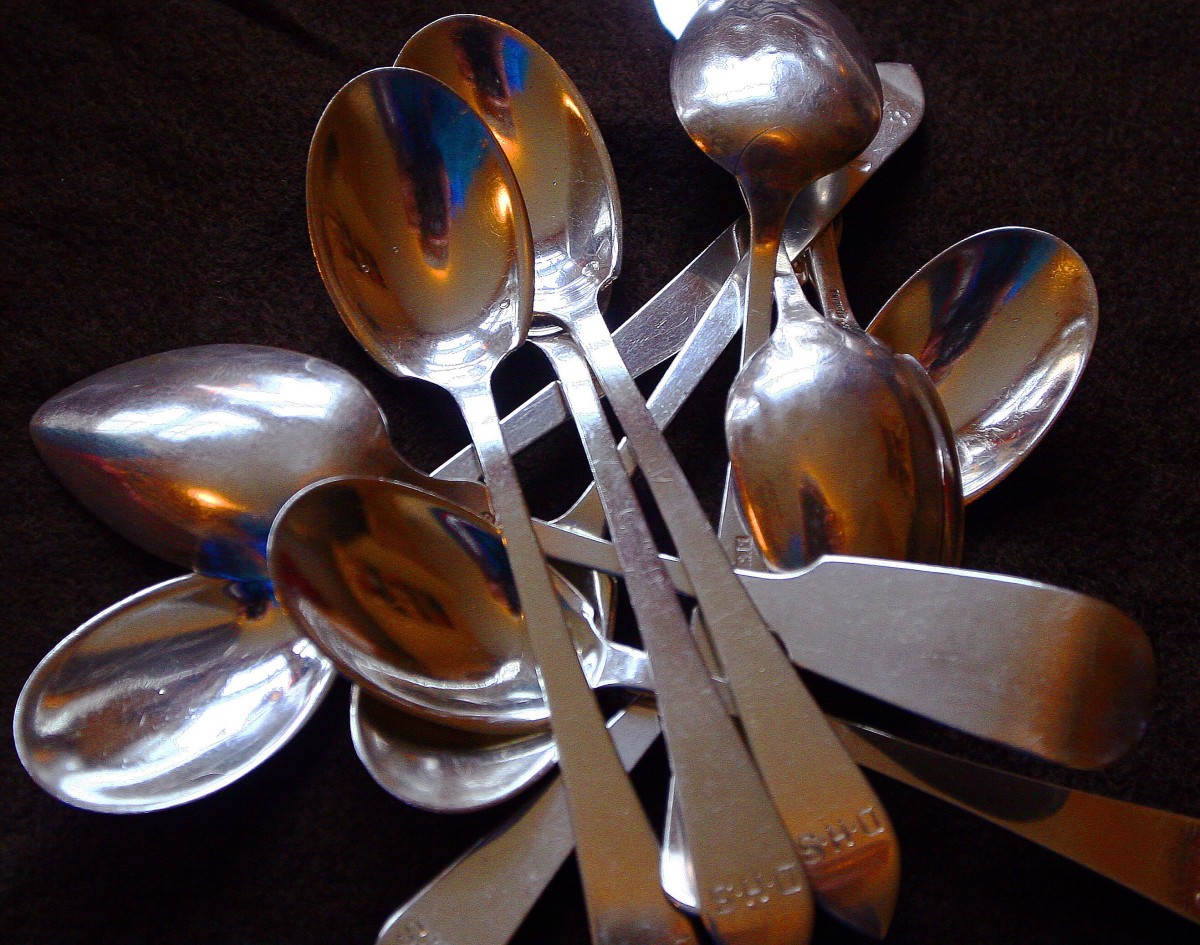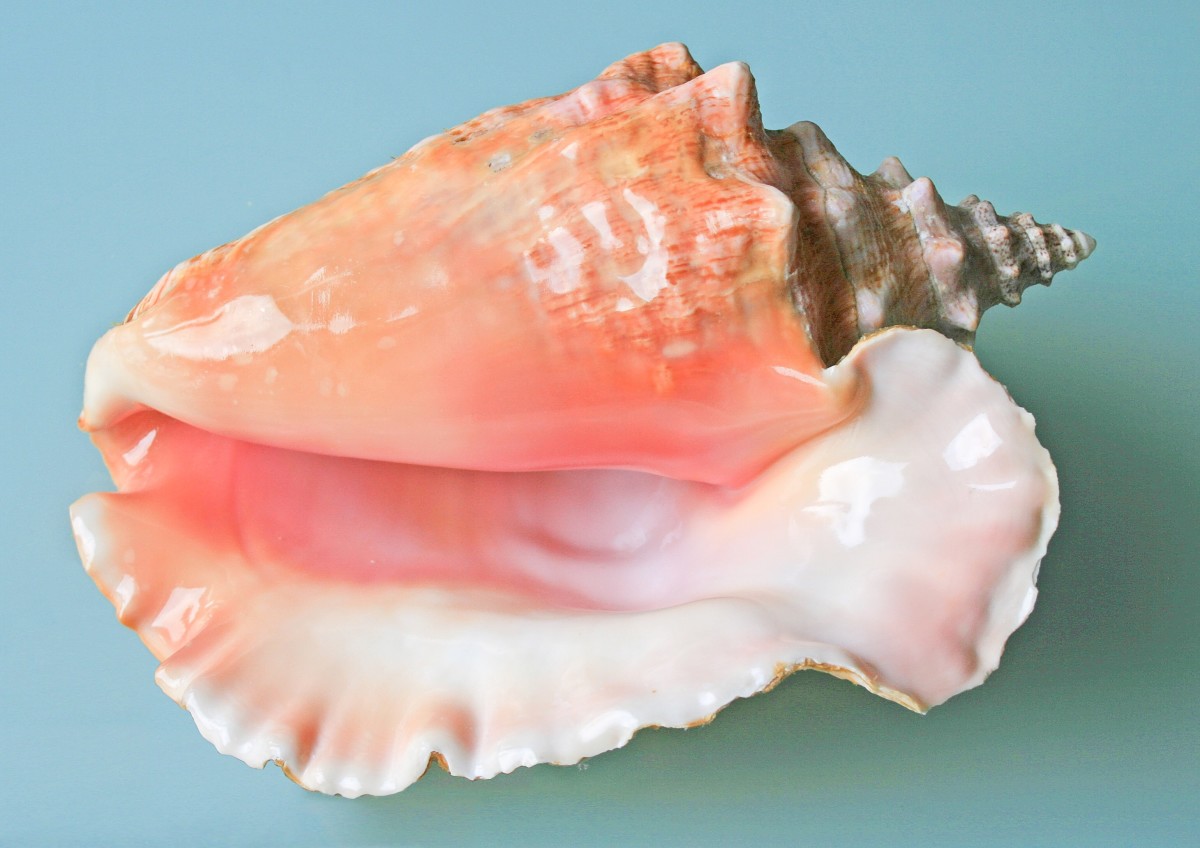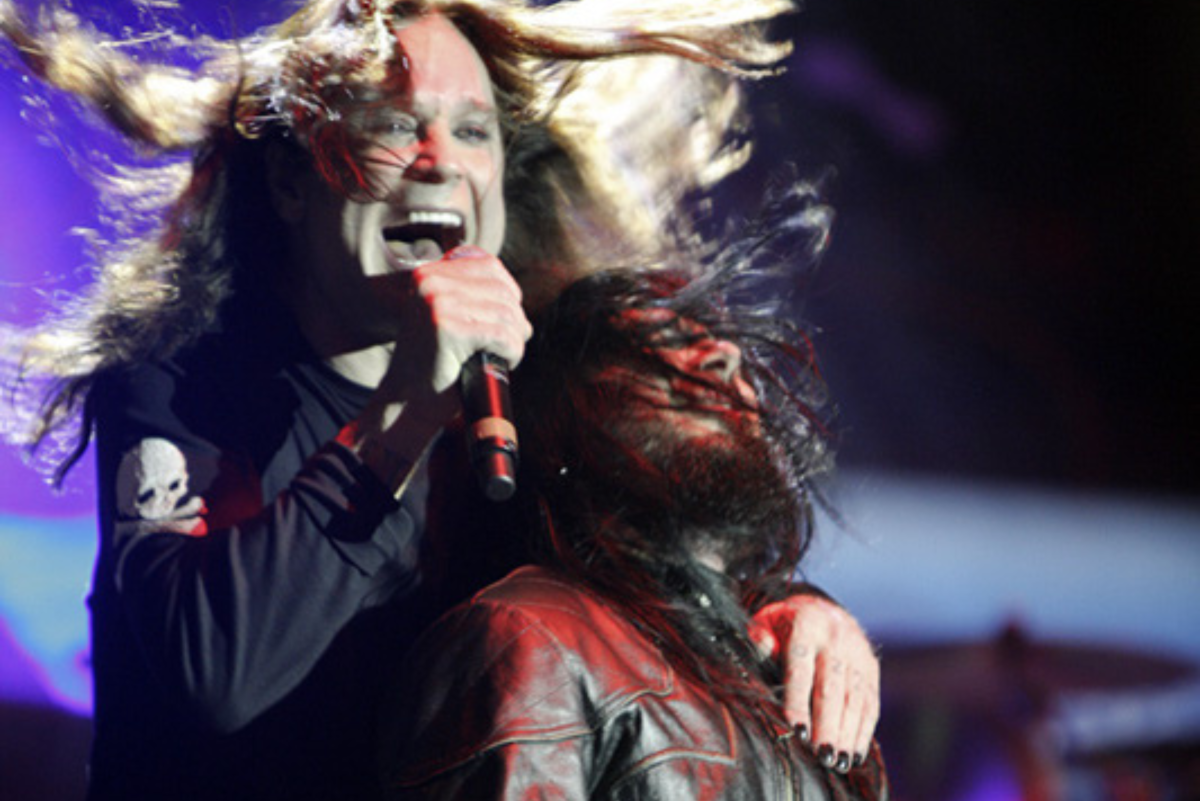On playing the trombone
In 1687, Daniel Speer wrote a book on how to play various instruments. That could have gotten him in big trouble with the "musician's union" of his day, so he offered the preemptive defense that he wasn't taking business away from anyone with his instructions. After all, no one could learn to play any of the instruments without a teacher.
I don't have to look over my shoulder hoping the union doesn't come after me, but one thing hasn't changed since then. No one will learn to play trombone just by reading this article. You need a teacher. This article may be a useful supplement to what your teacher says, though--especially for high-school students and younger who may be taking lessons from a band director who is an expert player on some other instrument. I hope teachers will also find it useful.
Certain aspects of playing trombone are common to all wind instruments. Others are common to all other brass instruments. Still others--especially slide technique--are unique to the trombone.
POSTURE
Stand or sit with your back straight but not rigid, shoulders relaxed, and your elbows slightly apart from your body. When you pick up the trombone, bring it all the way to your face. Be careful not to meet it halfway by moving your head forward. Your head must be balanced on top of your body.
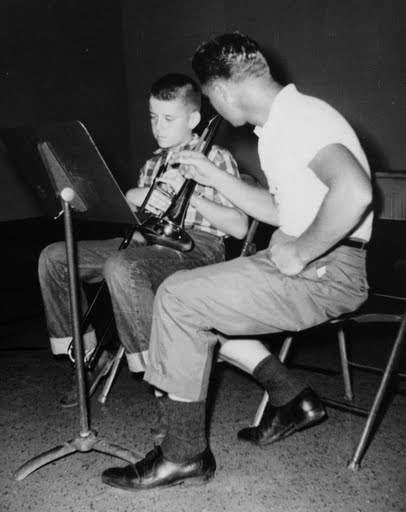
GETTING THE FIRST SOUND
(Teachers, this instruction is more for you than the students. It works at building at least some good habits from the start.)
First, without the trombone, say "mmmmm."
Next,
pull the corners of your mouth back as if you were holding two
toothpicks; say "mmmmm" again, but end it with a splattered "p," like a
raspberry. It might not sound very nice, but it is the sound you want.
Next,
set your mouth the same way, with lips touching and corners tight. This
time try to sustain that raspberry sound for a while. That is, don't
let your lips fly apart. Brass players call this sound the buzz. Your
lips make the sound, not the instrument itself.
When you can
sustain the buzz for a couple of seconds, buzz into the mouthpiece. But
for proper mouthpiece placement, it is necessary to learn about the
"embouchure," which is a fancy word that means how your lips and the
mouthpiece best fit together.
EMBOUCHURE
Teachers
used to say to put the mouthpiece on the center of your lips, with
either half of the mouthpiece on each side of your lips, or with more
mouthpiece above than below. It turns out that it's not quite that
simple. Everyone's mouth is different, and an embouchure that will
produce excellent results for one person will not work for someone
else.
The first few times you try to make a sound on the
instrument, just follow the old advice. You have no basis to do
anything different. Over time, with close attention to your own body
and the help of a well qualified teacher, you will discover what works
best for you.
(Many beginners, and students up through high
school, take their first lessons in classes taught by a band director,
who, likely as not, plays some other instrument besides trombone. Their
first private teacher is likely to be a college student or even an
older high school teacher. These people can teach valuable lessons
about many aspects of music and trombone playing, but don't look to
them to help you find the best embouchure.)
Everyone's jaws and
teeth align a little differently, although these differences can be
conveniently divided into a limited number of categories. Donald S.
Reinhardt identified four basic embouchure types, each of which has two
or three subtypes for a total of nine different embouchures. His ideas
generated heated controversy in his lifetime, but have lately gained a
lot more (if not universal) acceptance. I recommend David M. Wilken's
article "An Introduction to Donald S. Reinhardt's Pivot System" to anyone who wants a fuller explanation.
In
particular, when you buzz, you are blowing air through your lips, and
the air will either go up or down, depending on the alignment of your
lips within the mouthpiece. That, in turn, depends greatly on the
alignment of your jaws and teeth. Identifying the best embouchure for
any individual requires careful observation of these tendencies.
BREATHING
Music teachers used to say to breathe from the diaphragm. Perhaps some still do. The fact is we can't directly control the diaphragm and can't breathe without it. It is better to say to breathe with the abdomen. I have explained that in a pair of other articles: "How to Take a Deep Breath" and "How to Breathe for Singing or Playing a Wind Instrument."
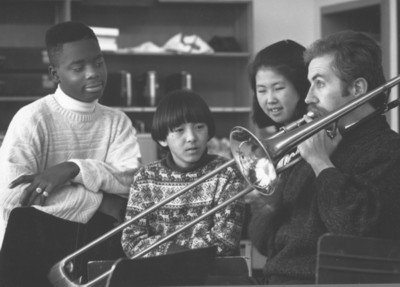
TONGUING
When I explained how to make the first sound, I
said nothing about the tongue. It is good to be able to start the buzz
and make a sound without the tongue for exercise, but in musical
situations, always start the sound with a stroke of the tongue.
There
are several kinds of musical phrases. They all require somewhat
different tonguing, but the first note will probably begin with your
tongue making the letter "t" as in "tah." Do not use your tongue to
stop a note. Say "tah" several times out loud, with a slight pause
between each one. Then, make some of the "tahs" long and some very
short. Notice the physical sensation when you end the sound (or better,
begin the silence following the sound). You always said "tah" and not
"taht." Do the same thing to end a note.
Many times, a phrase
will simply require a succession of "tahs." If you noticed, when you
say "tah," the "t" is unvoiced. That is, even if you do not
deliberately put silence between the syllables, there is still some
separation. When you play notes on the trombone, the notes are
separated, but you do not stop the breath between them.
Phrases
where you want to minimize the separation and link all the notes
together are called legato. Phrases where you want to maximize the
separation so that there is noticeable silence between notes is called
staccato.
For legato, after the first note in the phrase,
tongue as if saying "dah" or "lah" instead of "tah." If you whisper
"tah dah dah dah tah dah dah dah," you can hear and feel the difference
between "t" and "d." It is also possible to play natural slurs when,
for example the two notes next to each other are in the same slide
position. Practice legato tonguing so that it sounds the same as a
natural slur.
Staccato tonguing, on the other hand, always
starts with "tah," but you must stop the sound after every note, not
just the last one in the phrase. Generally speaking, when a passage is
marked staccato, divide each note in half. Play the first half of the
note and finish out the note value with a rest. Staccato notes are not
necessarily extremely short. It is the fact of silence between notes
that makes staccato, so in slow tempos, staccato notes can still feel
fairly long.
At very rapid tempos, short notes can go by so
quickly that it is impossible to pronounce "tah tah tah" clearly. In
that case, you can double tongue ("tah kah tah kah tah kah") or triple
tongue (two ways: "tah tah kah tah tah kah" or "Tah kah tah Kah tah
kah"). A legato multiple tongue alternates "dah" and "gah." Jazz
players often play something more like "doodle doodle doodle."
SLIDE TECHNIQUE
A
trombone slide has seven "positions," each a half step away from the
positions next to it. The first order of business in learning the
trombone is to learn where the positions are and what notes can be
played there. There are no markings. You have to learn by what it feels
like and what it sounds like. If you have short arms, make sure you do
not distort your embouchure to reach the outer positions. It is better
not to play some notes at all than to develop bad habits.
Once
you learn the basic positions, you need to learn how to adjust them up
or down to play the notes in tune. More on that later.
The
distance between first and second position is about 3 1/2 inches. The
distance between first and seventh position is almost two feet. But no
matter how near or far away the next slide position is, you have
exactly the same amount of time to get there. You must move the slide
faster for a distant position than for an adjacent position.
When
you play staccato, do not stop the slide at each note. Keep the slide
in constant motion and tongue the notes as you go past their position.
When playing legato, on the other hand, move the slide rapidly between
notes and stop the slide for each one.
INTONATION
Do
you know that all the intervals on a piano are a little out of tune? A
keyboard instrument, a harp, or a fretted instrument like a guitar must
be tuned with equal half steps. All other instruments sound better
together if they can play pure intervals. With keyed instruments like
the clarinet or valved instruments like the trumpet, the players must
often work around intonation problems with their embouchure, finding
unusual fingerings, or some other kind of awkwardness.
The
trombone has no such limitation. The tuning slide, we say, is in the
right hand. The trombone can play more perfectly in tune than any other
wind instrument. Unfortunately, that also means that it can play more
hideously out of tune than any other wind instrument. A very important
part of learning to play trombone consists of learning to hear both
pure intervals and tempered intervals and know how to adjust the basic
slide positions to play either of them in tune.
No one reading
this article will be able to pick up a trombone and start playing it,
but I hope that beginners and intermediate players--and teachers--will
find some benefit.
